
WASTE MANAGEMENT SUSTAINABILITY HERO
Evidence-based strategy for reducing plastic pollution

Investing in SA’s renewable energy capacity


Evidence-based strategy for reducing plastic pollution

Investing in SA’s renewable energy capacity


Manufacturing solutions, not products


















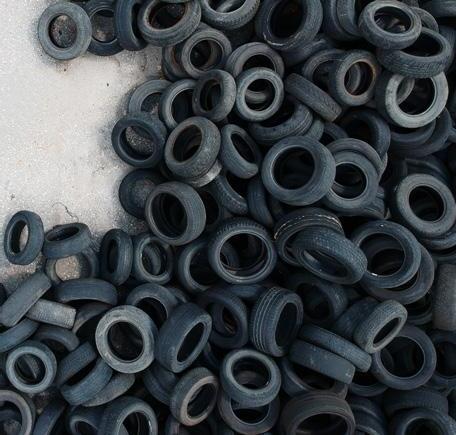
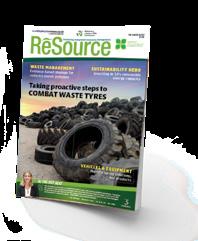
Each country has its own challenges when dealing with waste tyres –they are either being disposed of in landfills or illegally dumped, with only small amounts being recycled. The South African Tyre Manufacturers Conference provides some insight into the current state of the tyre
industry P6
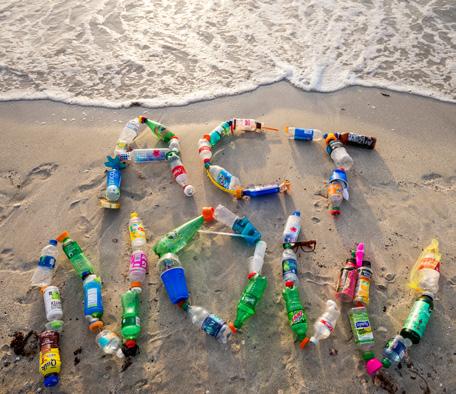
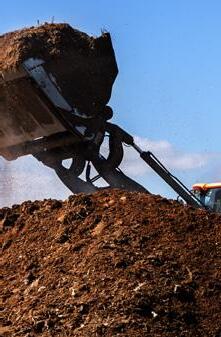
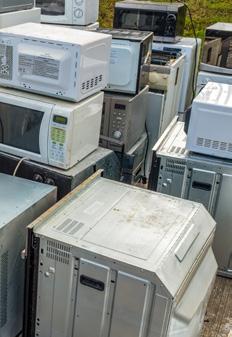
July 5-7, 2023
Gallagher Convention Centre, Johannesburg, South Africa
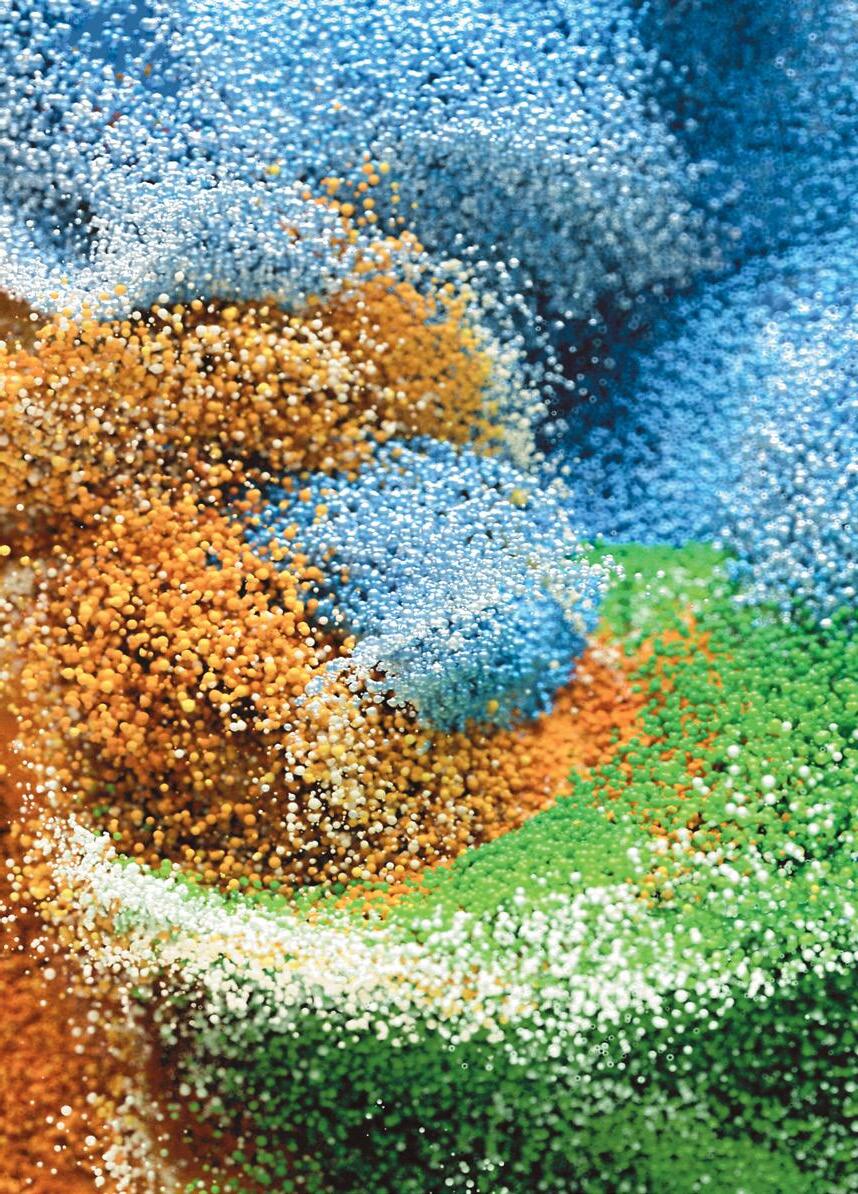
Reasons to attend IFAT Africa 2023
D ys o n tworking n ng g m nt
G t ss to th l t st nvironm nt l t hnologi s innov tions n tr n s
A ss to Knowl g ri h support progr ms
Provi ing r r v lopm nt n tworking n knowl g x h ng opportuniti s

Conn t with gov rnm nt o i ls n poli y m k rs
Bringing tog th r l ing in ustry xp rts rom ross A ri n roun th worl
nlo k n w possi iliti s or your usin ss with innov tiv pro u ts n s rvi s

Editor Nombulelo Manyana
Managing editor Alastair Currie
Editorial coordinator Ziyanda Majodina
Head of design Beren Bauermeister
Chief sub-editor Tristan Snijders
Contributors Mpendulo Ginindza, Susanne Karcher, Suzan Oelofse, Kate Stubbs, Hugh Tyrrell
Production & client liaison manager
Antois-Leigh Nepgen
Group sales manager Chilomia Van Wijk
Distribution manager Nomsa Masina
Distribution coordinator Asha Pursotham
Advertising sales Joanne Lawrie
Cell +27 (0)82 346 5338
joanne.lawrie@3smedia.co.za

It is always such a humbling experience putting together our quarterly waste management magazine, which has somehow become a time for some serious reflection – not only for the industry but personally as well.
Publisher Jacques Breytenbach
3S Media
Production Park, 83 Heidelberg Road, City Deep, Johannesburg South, 2136 PO Box 92026, Norwood 2117
Tel +27 (0)11 233 2600
Fax +27 (0)11 234 7274/5 www.3smedia.co.za
Annual subscription subs@3smedia.co.za
R200.00 (incl VAT) South Africa
ISSN 1680-4902
Institute of Waste Management of Southern Africa
Tel +27 (0)11 675 3462
Email iwmsa@iwmsa.co.za
All material herein is copyright protected and may not be reproduced either in whole or in part without the prior written permission of the publisher. The views and opinions of authors expressed in the magazine do not necessarily reflect those of the publisher, editor or the Institute of Waste Management of Southern Africa.
© Copyright 2023. All rights reserved.
Novus Holdings is a Level 2 Broad-Based Black Economic Empowerment (BBBEE) Contributor, with 125% recognised procurement recognition. View our BBBEE scorecard here: https://novus.holdings/ sustainability/transformation

It always begs the question whether we are doing enough to fulfil the constitutional imperative that stipulates everyone has the right to an environment that is not harmful to their health and to have the environment protected for the benefit of future generations through legislative and other measures.
I ask myself whether we are recycling enough and whether industry measures – coupled with government legislature – will be enough to reduce our carbon footprint. More importantly, I ask myself what more needs to be done in order to guarantee that South Africa becomes more socially and environmentally sustainable.
The introduction of the EPR Regulations in May 2021 heralded a change in how producers and importers design, make, sell and keep their products in the recycling loop.
The 2022 ban on organic waste and waste electrical and electronic equipment (widely known as WEEE or e-waste) was also welcomed wholeheartedly by industry – with so many stakeholders getting excited about what this meant for the value that waste could add to the economy and the number of jobs that could be created from this.
The revision of the National Waste Management Strategy (NWMS) 2020 also showed renewed commitment by government to provide a framework for policy and strategic interventions for the waste sector. According to industry experts we interview in this edition, as well as past ones, South Africa has some of the best legislature in the world.
What is left now is enforcement, compliance and personal will.
Understanding that all these measures and a sound legislative framework are great on paper but just smoke and mirrors if not executed is the beginning of knowledge. We must not only enforce these changes in our businesses and have industry take charge with making sure that waste in beneficiated, but we also have to comply in our homes.
We need to separate our waste at source; we need to reduce waste generation in our daily lives by being conscious about how we use plastics. Most importantly, we need to recycle consistently. We need to stop littering.
The bins are there and the framework exists ; although there is some more work to be done, it starts with us. It starts with our relationship with waste and understanding that, without personal intervention, pollution levels could potentially double by 2040, according to a study by the CSIR.
The only way we will have a better and more sustainable tomorrow is if we make it. So, let’s take charge, let’s reduce, let’s reuse and let’s recycle.




It has been almost a year since I was appointed to the role of IWMSA President. I think this period is a good time to reflect as I am almost halfway through my term.
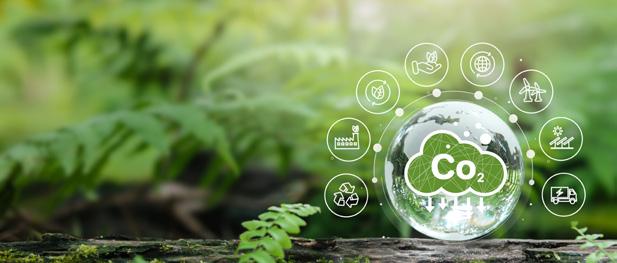
As I stated in my inaugural speech: I am not alone in this journey – I have the support of a capable Council, hard-working IWMSA staff, and dedicated volunteers at the branches.
There is a lot of work that goes on in the background to keep the organisation running. When I joined the Council in July 2020, the organisation had rebranded and rolled out the IWMSA Strategy 2025 to guide the organisation through the next five years. At the time, the whole world was going through what became a disruptive three years.
We are working hard to overcome those setbacks. We are in our second year – the anchor leg – as Council, and will be sitting at the end of May in a facilitated strategy session to reflect on our past year and plan the future. We intend to prepare for
FOR

the next leaders to take the organisation to new heights in the next five-year cycle.
We are participating in IFAT Africa 2023, scheduled to take place at Gallagher Convention Centre from 5 to 7 July. IFAT Africa is the ultimate platform to showcase technologies and solutions for water, sewage, refuse and recycling for the sub-Saharan Africa market. The trade fair is the gateway for international companies to the African market and for African enterprises to the global market, connecting key industry players with senior buyers and decision-makers in the region. Do not miss this event.
We indeed have progressive preparations for the future. Cabinet announced in March that they approved for South Africa to host the ISWA World Congress in Cape Town. South Africa, in a bid led by the Institute of Waste Management of Southern Africa (IWMSA), won the right to host the International Solid Waste Association (ISWA) 2024 World Congress, to be held at the Cape Town International Convention Centre (CTICC) from 15 to 18 September 2024.
This will be the first ISWA Congress held on the African continent. The conference is hosted by a different country each year, with the 2023 World Congress being held in Muscat, Oman, and the 2025 Congress planned for Argentina. The City of Cape Town is on board and excited to host this prestigious event in the Mother City.
Concerning the operational processes at the IWMSA, please go to our calendar of events to see what is happening at the Institute. I am looking forward to our flagship event – the Landfill and Waste Treatment Conference 2023 themed: #WasteShedding! Solutions, actions, not promises!
This will take place at the University of Cape Town Breakwater Lodge Conference Centre on 18 to 20 October. The event will explore how the current energy crisis is affecting landfills and other alternatives to waste disposal, and how these challenges can be overcome. It is our role as the IWMSA to bring all stakeholders together to help address our challenges.
There are different ways that you can participate in this event. Calls are open for abstract papers to be submitted, so do not miss this opportunity. The deadline for the first recipient of abstracts is 15 June 2023. Industry is invited to bring together stakeholders, for an interactive discussion among panel speakers and the audience. Check the IWMSA website and communications to see how you can lead this initiative.
We can achieve so much together. As the famed African proverb goes, “If you want to go fast, go alone. If you want to go far, go together.”


Each country has its own challenges when dealing with waste tyres –they are either being disposed of in landfills or illegally dumped, with only small amounts being recycled. The South African Tyre Manufacturers Conference provides some insight into the current state of the tyre recycling industry.

The South African tyre market was valued at US$2 093.2 million (R40.1 billion) in the year 2021 and is expected to reach $3 041.9 million (R58.3 billion) by 2028, according to a market report by BlueWeave Consulting. However, with the continued growth that we see in the sector, the tyre industry also anticipates seeing more waste tyres make their way into our waste streams.

An industry organisation, the South African Tyre Manufacturers Conference (SATMC), says its top priorities are to take proactive steps in collaboration with its members, supply chain and government partners to ensure a stable and sustainable tyre manufacturing industry in South Africa.
Nduduzo Chala, managing executive, SATMC, says the tyre manufacturing industry is excited about its prospects in 2023.
“Considering the effects of the Covid-19 pandemic and the subsequent looting in KZN, which caused a lot of economic stress, the industry has stabilised. And we are starting to see growth within the domestic car manufacturing market – which generally guides the way we as tyre manufacturers and retailers conduct our business. Prospects are looking good because we have seen a lot of investment and commitment from the industry,” says Chala.
He goes on to say that the industry’s optimism mainly stems from the commitments made by its local manufacturers.
“Post-Covid-19, there was a 36-month outlook for recovery and what we have seen has been far better than what was anticipated. Local tyre manufacturers are very committed to improving poor
waste tyre collection and their dedication to increase recycling rates countrywide has been encouraging. We just need to ensure that we create an environment where we can invest and collaborate more.”
The SATMC is the official industry body and trade association of the local tyre manufacturers, namely Bridgestone, Continental, Goodyear and Sumitomo Rubber. They are the voice of the local tyre manufacturers and represent tyre manufacturers on trade, economic and environmental policies, as well as tyre sector regulations.
“We maintain stakeholder relationships in order to drive the objectives of our members. We actively engage consumers and other stakeholders to bring awareness and empower them on road safety,” says Chala.
The SATMC views waste management as a critical focus area and recognises that it is a major challenge facing the tyre industry because waste tyres have a negative environmental impact. Chala notes there are four main challenges that relate to waste tyres:
1. Growth of second-hand tyre market – which is directly linked to a cycle of waste tyre management that is not
working and consumers preferring to utilise second-hand tyres
2. Illicit trading
3. Tyre dumping
4. Ineffective waste tyre management – this is linked to a growth in local tyre production in comparison to limited waste tyre processing in the country.
The SATMC is also working closely with its tyre dealers to encourage the proper storage of waste tyres.
“We have seen instances where tyre dealers end up closing down due to carrying too much waste tyre stock, and this is all because we have a tyre recycling system that does not allow for timely processing of that surplus.

Chala says dealers need to be aware of the regulations governing the storage of these scraps. It is required that a dedicated waste tyre storage area, not exceeding 500 m2, be set up by the dealer. In addition, no single pile of waste tyres may exceed a height of 3 m, a length of 20 m and a width of 10 m, and the waste storage plan must be approved by the municipal fire department.
“We are thus promoting responsible practices among dealers.”
It is estimated that roughly 12 million waste tyres are lying in South African dumps, as stockpiles or just simply scattered across residential, industrial and rural areas. Chala points out that one of the biggest issues in South Africa is that the second-hand tyre market is unregulated.
A new tyre is required to go through extensive quality checks, a process overseen by the National Regulatory for Compulsory Specifications; however, tyres within the second-hand market are not properly vetted to ensure that they can re-enter the space as sustainable products.
“We need to check things like how many times a tyre has been repaired, and whether there has been damage due to potholes. All this must be done before it can be used as a second-hand tyre. We are thus working with the SABS to develop standards to approve tyres before they are deemed worthy to re-enter the market.”
Additionally, the SATMC’s members are committed to finalising the Industry Waste Management Plan for Tyres by June 2023 –which will help in developing and implementing a clear roadmap to reduce carbon emissions in the sector.
“We as the SATMC are working closing with government, offering our expertise to find working solutions to this growing waste tyre problem. Our work doesn’t just end at paying the tyre levy, but its more about finding economical solutions to a shared problem.”
Chala says their aim is to advocate for a Waste Tyre Management Plan that will serve the entire tyre industry value chain. However, they must first find the correct solutions to the disposal of these waste tyres, seeing as this is the only way for the matter to gain traction.
Illegal tyre imports are rising in South Africa, posing a risk to road users and jobs in the local industry. The SATMC has been at the forefront
against this issue, often pointing out the far-reaching impacts of illicit trade on the industry, as well as the safety of drivers and passengers on the road.
The SATMC is working with law enforcement agencies to identify and investigate cases of illicit tyre trade and are calling for stronger measures to prevent this trade from happening in the first place. There are rising incidents of misdeclaration of tyre consignments and rerouting of imports through neighbouring countries to avoid tyre duties, environment levies and permits.
However, with the help of ITAC, SARS and the Department of Trade, Industry and Competition, the SATMC is working on measures to detect non-compliant behaviour and ensure consequences for those found to have resorted to this illegal and criminal behaviour.
“We recognise the importance of reducing our carbon footprint and the role that the tyre industry can play in addressing climate change for the sake of future generations. We are therefore working closely with our members to identify and implement best practices that will help us achieve our carbon reduction targets,” concludes Chala.



The City of Cape Town is currently running a pilot project where backyarders at community residential units (CRUs) are issued with high-quality bags for containing the week’s refuse.
The City’s CRU homes are currently supplied with one 240 ℓ wheelie bin for refuse collection once per week. However, theses bins fill up quickly –where backyard tenants are also living on these properties – often well before the scheduled weekly refuse collection. Many times, the contents of these bins are dumped in surrounding areas to make space for new waste.
The pilot involves furnishing the backyard dwellings with two moisture-controlled bags to store waste. The collected bags are then
transported by smaller light-duty vehicles, known affectionately as the Bakkie Brigade, for separation of recyclables, before the remaining waste is transported to landfill.
“We hope this will have a positive effect on illegal dumping levels in the area and improve community health. We encourage all those who are currently benefitting to make use of the service and see the difference it can make to your areas.
“This forms part of a wider programme to determine the factors driving illegal dumping and to explore possible solutions. With current levels of dumping, it cannot be business as usual,” said Alderman Grant Twigg, MMC for Urban Waste Management.
South Africa continues to record increase in the annual recycling of PVC products. Despite the challenges posed by the Covid-19 pandemic for the industry, the recycling rate of vinyl products increased by 9.5% in 2020.
The following year (2021), 22 242 tonnes of PVC were recycled: 14 201 t of flexible and 8 041 t of rigid PVC. This is a 3.8% increase; while the virgin market for PVC decreased by 4.6% over the same period.
The Southern African Vinyls Association (SAVA) – the voluntary association representing the local vinyls industry – says this achievement is a significant contribution to the country’s efforts to promote sustainable waste management practices and the circular economy.
According to data released by Plastics SA, the total domestic demand for PVC is approximately 141 800 t – of which roughly 76 000 t go into the manufacturing of rigids (compounds, dry blends, etc.) and 65 800 t are used for flexibles. Of this amount, only 12 600 t (or 9%) of the locally consumed PVC goes into packaging, such as bottles, thermoformed punnets, blister packs, clingfilm and other flexible packaging.
Although PVC is a small-volume polymer packaging material, SAVA stresses that it has specific and necessary application values. Moreover, vinyl products are in high demand by the almost 50 PVC recyclers that operate throughout South Africa and work in close partnership with SAVA.

With the seemingly endless challenges that South Africa and its people face, the driving force behind these challenges seems to be the notorious rolling blackouts that have plagued our country for more than a decade. From manufacturing and production to retail and education, not a single industry is being left unscathed and unaffected. Anton Hanekom, executive director, Plastics SA, says that the local plastics industry is no exception when it comes to experiencing the negative impact of relentless interruptions in power supply.

The industry is especially exposed when it comes to load-shedding, since the processing and production of plastics and plastic products are done primarily through thermal processing. This means that high temperatures must be maintained throughout the manufacturing process.
However, without power, these high temperatures cannot be effectively reached and maintained; nor is there enough time between scheduled power outages for the machines used to reach the required temperature for the processes to be restarted. When the plastics industry faces such severe challenges, it quickly snowballs and affects other closely related and critical industries, such as the packaging sector, which accounts for half of all plastic polymer consumption in South Africa, followed by the building and construction sector.
The challenges extend beyond the financial bottom line of these producers, as effective packaging is important to avoid food waste, extend the shelf life and prevent spoilage or breakage of certain products. We need to start talking about ‘packaging security’ in the same breath as food security.


The global recycled concrete aggregates market value was recorded at US$9 053.7 million (R172.98 million) in 2023. Over the next decade (2023 to 2033), global recycled concrete aggregate sales are likely to soar at a healthy CAGR of 8.0%.
Total market valuation at the end of 2033 is expected to reach around $19 500.1 million (R372.6 million).
Recycled concrete aggregates (RCAs) are materials obtained from the demolition of old concrete structures such as buildings, bridges and roads. These materials are then crushed and screened into different sizes suitable for use in various construction applications.
RCAs are sustainable and eco-friendly construction materials that are experiencing significant growth due to various factors. The adoption of recycled concrete aggregates is increasing due to the growing demand for sustainable construction practices. As construction companies become more aware of the environmental impact of their projects and seek to reduce their carbon footprint, they are shifting towards RCAs.
RCAs offer an eco-friendly alternative to traditional building materials, conserving natural resources and reducing waste in the construction industry. With their durability and ability to withstand harsh conditions, RCAs are commonly used in road and pavement applications. They meet or exceed industry standards and have thus become reliable and longlasting materials for construction projects.
More than 40 local, district and provincial municipalities countrywide have benefitted from strategic sustainability partnerships in 2021/22 – not just improving waste collection and PET plastic recycling rates, but also creating much-needed income opportunities in the sector and helping develop South Africa’s circular economy.
For the past 17 years, South Africa’s most experienced plastic producer responsibility organisation (PRO), PETCO, together with its members, has been engaging with municipalities on sustainability programmes to improve effective waste management and recycling rates.
Key among municipal waste management priorities is the diversion of waste that has value from landfills, as well as accommodating waste pickers in the recycling value chain.
PETCO’s role in such municipal waste management partnership projects comes in the form of equipment provision and infrastructure support for waste pickers and buy-back centres – with the goal of incorporating waste pickers in the formal recycling sector – as well as training and skills development for municipal employees involved in waste management.
Plans are currently underway to assist a further 21 sustainability projects with equipment, branding and accredited training.


During 2014, Nokubonga Mnyango quit her job as a driver-cum-admin clerk at a wood chipping mill in Richards Bay for what some community members described as ‘digging in dirty dustbins’. Today, she runs two thriving buy-back centres in Empangeni, employing 22 full-time staff and supporting 100 waste collectors in the community. Her passion for recycling has been
recognised by South Africa’s longest-standing producer responsibility organisation, PETCO, which on behalf of its members has supported her journey from wastepreneur to buy-back centre owner. The support has empowered Mnyango and helped her keep waste out of the environment and give it value by bringing it into the circular economy.
Uthando collects about 202 t per month of mixed recyclables – including various plastics, paper, cardboard and cans – which, in turn, are sold to recyclers. It boasts 22 permanent employees who collect and sort recyclables. It also buys recyclables from 100 waste collectors for its two operational sites in Ngwelezane and Kuleka, Empangeni.
In the
upcoming years,
it’s anticipated that the waste management industry will expand significantly. The waste management business is undergoing significant transformation as a result of governmental regulations and technological advancement.
By Suzan Oelofse, CSIR

Writing an article about trends in waste management in 2023 is not as simple as one would expect. Studying new startups in waste management globally provides one way of identifying the latest trends and innovations.
A study that was published on the research blog of StartUs Insights used a big data and artificial intelligence (AI) platform to derive data from 2 927 global startups and scale-ups in waste management, and identified eight distinct trends as illustrated in Figure 1.
These trends clearly indicate that, internationally, automation and the circular economy represent the future of waste management. Robotic sorting, AI, machine learning and IoT-powered waste collection or disposal are gaining prominence due to speed and efficiency – and with progressing monitoring systems, more and more waste data become available for analysis.
In the South African context, the main trends currently are the transition to a circular economy through implementing extended producer responsibility (EPR), and waste picker integration.
A circular economy is restorative and regenerative by design and aims to keep products, components and materials at their highest utility and value at all times, and distinguishing between technical and biological cycles.
The South African National Waste Management Strategy, 2020 has the concept of the circular economy at its centre. To give effect to a circular economy in South Africa, producers of consumer goods must be innovative and adopt new approaches and techniques in product design, production and packaging, and consumers must change their behaviour when making consumption and disposal choices.
Waste separation at source must be implemented by all households to ensure that recyclable materials are available for collection for recycling. Recycling is not only a way of keeping of materials in the economy; it also reduces the need for raw materials extraction by replacing virgin material with secondary resources.
The EPR Regulations, as amended, requires mandatory EPR schemes to be implemented in
the following sectors: electrical and electronic equipment; lighting; paper, packaging and some single-use products; lubricant oils; pesticides; and portable batteries. As such, producer responsibility organisations (PROs) registered with the Department of Forestry, Fisheries and the Environment have started collecting EPR fees towards meeting the targets set in regulations. However, meeting the targets for collection and recycling requires investment in infrastructure to support the collection and sorting of recyclable materials. No clear trends for the increased collection and recycling of paper and packaging materials have been observed.
There seems to be confusion about who should take the initiative to introduce waste separation at source and who should fund what. From an economic perspective, there should be a joint effort between PROs and municipalities for the collection of source-separated recyclables from households.
The lack of formal waste separation-at-source systems in South African municipalities has created a conducive environment for informal
waste pickers to thrive. The waste pickers are typically divided in street waste pickers operating at kerbside, sorting through waste bins ahead of formal waste collection vehicles, or landfill waste pickers sorting through waste disposed of at landfills.
Understandably, waste pickers focus on collecting high-value materials to maximise their earnings; therefore, not all recyclable materials are collected by waste pickers.
Acknowledging the role of informal waste pickers in recycling in South Africa is important, as 76% of waste plastics that enter recycling is collected by the informal waste pickers. The role of the waste pickers is being recognised in the EPR Regulations by promoting their integration into the postconsumer value chain and compensating them for their services.
Great strides have been made towards waste picker integration. The publication of the Waste Picker Integration Guideline for South Africa was followed by the release of waste picker integration website (www.wastepickerintegration.org) and the implementation of the waste picker registration system.
Unfortunately, the transitioning to a circular economy is still often viewed as a transitioning from landfill disposal to recycling. It should be
understood that the circular economy is more than that and requires a mindset change starting at product design and production.
Furthermore, waste picker integration is a good move and should be supported, but to truly shift to a circular economy, the responsibility for waste separation should be moved to the waste generator – be it in the household or elsewhere – and EPR schemes should work collaboratively to find solutions for the sustainable collection of recyclable materials.
The IWMSA, as a non-profit association, is dedicated to promoting professional waste management practices. By becoming one of its members, you can get the opportunity to join a community of like-minded professionals who are passionate about waste management and environmental sustainability.
The membership offerings give you access to exclusive resources, training and networking opportunities that will help you advance your career and organisation to make a positive impact on the environment. Plus, you’ll be part of a movement that is dedicated to promoting best practices and shaping the future of waste management in South Africa.
FIGURE 1 Waste management trends in global start-ups (Source: Top 8 Waste Management Trends in 2023 | StartUs Insights [startus-insights.com])
The IWMSA is also excited to launch the ISWA African Chapter in 2023 with its colleagues from Nigeria, Liberia and Uganda. Within the ISWA Young Professional Group, the opportunity exists to create local chapters from the waste industry within a country/region to foster networking and collaboration between young waste management professionals in Africa.
Become part of the movement to make the planet more sustainable for future generations! Mark your calendars for the IWMSA’s two flagship events! The Landfill & Waste Treatment Conference & Exhibition 2023 will be held at the University of Cape Town on 18 to 19 October 2023, followed by the ISWA 2024 Conference in Cape Town on 15 to 18 September 2024. For more information on these events and other training opportunities, visit iwmsa.co.za.
• Top 8 Waste Management Trends in 2023 | StartUs Insights (startus-insights.com)
• National Waste Management Strategy 2020
• https://wasteroadmap.co.za/wp-content/ uploads/2021/02/Waste-Picker-IntegrationGuidelines.pdf
• https://wasteroadmap.co.za/wp-content/ uploads/2022/11/046-CSIR-Final_ReportReducing-Plastics-Pollution-Pathways.pdf







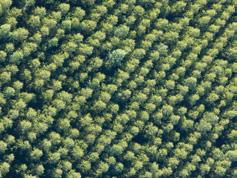


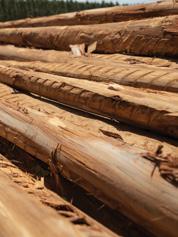





As a country, there is no doubt we are facing a magnitude of issues that border on human rights violations – challenges that have a long road to resolution. By Kate Stubbs
Not only are we in the throes of one of the worst power crises the country has seen but so too are we faced with a water crisis, a growing population putting pressure on already strained resources and, of course, farreaching climate concerns. However, not all is lost, and this should be a clear message to business

Kate Stubbs, Marketing Director, Interwaste
Sustainability has become the watchword for South African corporates, as they grapple with both the public’s demand for environmentally friendly products and the demands of ESG (environmental, social and governance) reporting.
The combination of the above is helping to drive a culture change across society, leading waste producers and waste managers to work together to identify innovations that address key waste issues, while meeting changing legislative demands.
What organisations are now learning is that much of the 90% of waste currently being disposed of to landfill can actually be reused as alternative resources, when managed effectively.
We need to shift from the traditional, linear production process – the take-makedispose model – towards one that aims to reduce all unnecessary waste materials, reduce the consumption of energy and raw materials and, where there is excess, to feed this back into the cycle.
This is the definition of the ‘circular economy’ model, where waste created in one industry is repurposed for use in other areas of industry and the economy, and
where disposal is the final option, rather than the immediate go-to.
This merely means looking deeper than the obvious solutions and finding ways to unilaterally work together to ensure such solutions become viable and cost-effective, and to ensure that we drive an understanding in communities as to the vital importance of such innovations in meeting South Africa’s challenges and being part of the change.
Not only does proper waste management ensure that we can reuse and repurpose the growing mound of waste, but it ensures that where waste cannot be repurposed/ recycled, it can – as a last resort – be sent to landfill, but done properly.
Without a doubt, the waste sector plays a fundamental role in meeting the country’s Sustainable Development Goals (SDGs), tackling at least 6 of the 15 goals in total. Goals 6 (Safe water), 7 (Clean energy), 13 (Climate action) and 11 (Sustainable cities) are the most prominent in this regard.
In fact, it is an integral part of these goals. Taking circular economy thinking into account – where waste reuse and repurposing are fundamental to not only meeting these objectives – is central to

addressing environmental impacts and growing ESG targets globally.
However, we have a conundrum where business, communities and some levels of government are underinformed about the potential of well-managed, compliant and innovative waste management solutions.
The reality, though, is that with a population of 61 million people and growing by around 1% a year – and with each person generating around 2 kg/day of waste – we are heading towards a waste disaster if we don’t start creating solutions and ensuring that all parties are educated as to why effective waste management is so important.
As a starting point, let’s discuss the impact of wastewater management on driving sustainable water supply. With 7 of the 13 major water systems in South Africa predicted to be in deficit by 2040 and the demand for water expected to exceed available supply by 2030, we need to find solutions. In our experience, wastewater management can result in the redistribution of water into the environment for irrigation and dust suppression, as well as to replenish rivers and catchments in our water infrastructure networks.
Furthermore, treated to the required standards, we have found that nearly all effluent can be recycled, if done properly, creating a strong solution for water sustainability and access – utilising water that was previously deemed not
safe for consumption. We need to create a much more diverse water mix, including groundwater and wastewater reuse, if we hope to protect this scarce resource and create a water supply that is safe and consistent.
On the other hand, waste can tackle energy crises but needs solid business, government and industry collaboration to see it to fruition. If we consider the Just Energy Transition’s focus on achieving ‘net zero’ carbon emissions by 2050, exploring alternative sustainable options is key and – if we consider that the global waste-toenergy market is expected to grow from US$28.4 billion (R545.7 billion) in 2017, to almost $43 billion (R826.2 billion) in 2024 – waste presents a large economic opportunity to establish new industries and/or revenue streams and meet the SDGs.
Converting waste to energy production occurs through three key processes –thermal, biological and physical. For each process, there are a variety of technologies available to convert different types of waste to energy such as electricity, steam or gas and so, there are multiple layers to meeting South Africa’s energy crisis – critical to government’s current agenda.
However, let’s consider the obvious. Not all waste can be reused or recycled and, where it can, cost can be prohibitive sometimes. Therefore, the need for waste management strategies that look at the full value chain of waste – and ensure that
the growing waste generated by the very communities and businesses we serve can be best managed and disposed of – should be critical.
Nobody wants to believe it, but engineered landfills and associated waste management practices remain cost-effective and are thus still an attractive and compliant option for managing a wide variety of waste types. However, with landfill airspace diminishing across the country, we have to consider the vital importance of creating more space to deal with the waste generated by South Africans.
This reiterates the importance of not only alternative solutions to meeting South Africa’s challenges but indicates the fundamental role of effective, ethical and compliant waste management practices in driving South Africa’s climate agenda. The challenge is great but so are the solutions – we must create strong industry collaboration and investment projects that are supported by communities to truly change the status quo.


South Africa, like most countries, is faced with growing plastic consumption and disposal – and with it, leakage of plastic into the environment.
The mismanagement of plastic waste, and associated plastic pollution of the environment, has become an issue of global concern. Currently, leakage of plastic waste to the marine environment is estimated at 12.7 Mt (million tonnes) per annum, while accumulated marine plastic debris since the 1950s is estimated to be in the order of 75-199 Mt.
Approximately 80% of marine plastic debris is thought to originate from land-based sources; and without intervention, this plastic pollution is predicted to nearly triple by 2040. An early study estimated that South Africa was a major contributor to marine plastic pollution, ranking 11th out of 192 coastal countries in terms of mismanaged plastic waste and generating an estimated 90-250 kt (kilotonnes) per annum of plastic polluting the oceans.
The global Breaking the Plastic Wave study, published by The Pew Charitable Trusts and SYSTEMIQ in 2020, produced an analysis of the global plastics system, to provide evidence of both the extent and nature of the plastic waste and pollution problem, and to understand the strategies needed to reduce plastic pollution.
The modelling and analysis used in the Breaking the Plastic Wave study has been developed as a
software application, referred to as the Pathways tool. To test and ensure applicability at the countryscale and to inform the development of strategies to reduce plastic pollution in developing countries, the CSIR collaborated with The Pew Charitable Trusts (USA) and Oxford University (UK) to apply the Pathways tool to South Africa.
This work was supported by the South African Department of Science and Innovation through the Waste RDI Roadmap, and CSIR Parliamentary Grant funding, with in-kind contributions from The Pew Charitable Trusts and Oxford University.
Through this work, the CSIR compiled a technical report, titled Reducing plastic pollution: A comprehensive, evidence-based strategy for South Africa*. This report utilised the Pathways tool in the South African context, developed the best strategies to reduce plastic pollution in South Africa and gives recommendations.
The model was run for three scenarios:
1
A Business-As-Usual (BAU) Scenario, which assumes no policies or measures for addressing plastic pollution.
2
An Extended Producer Responsibility (EPR) Scenario, with five-year targets for increasing recycling according to recent EPR legislation.
3
An Optimal System Change Scenario, which seeks to identify an optimal solution to

balance South Africa’s sustainable development objectives by minimising plastic pollution, greenhouse gas (GHG) emissions and capital costs, as well as maximising employment.
Under the BAU Scenario, total plastic pollution will almost double (increase by 75%) between 2020 and 2040. With a projected future rising population and increased consumption, there is a projected growth in plastic consumption of 1.33% per annum. The BAU scenario has no policies or measures in place to address plastic pollution, and there are no future changes in the carbon intensity of South Africa’s plastic polymer production, or in the ability of Sasol to meet local polymer demands.
Without EPR, and with no new plastics-related policies and measures in place, plastic pollution is set to almost double – from 491 kt in 2020 to 865 kt in 2040. Plastic pollution consists of 57% open burning causing air pollution, 30% land pollution and 14% aquatic pollution.
It is important to note that while increased collection will avoid the plastic pollution associated with unserviced households disposing of plastics to open dumps, it will increase the plastic waste being disposed to municipal landfills – both sanitary and unsanitary.
Therefore, a recommendation to prevent open dumps and unsanitary landfills leaking 5 274 kt of plastics into the environment between 20232040, is immediate action to phase out open dumps and to improve the design and operation of all landfills, so that they can be classed as sanitary through the effective cover and containment of plastics in situ.
Achieving the collection and recycling targets set out in South Africa’s EPR regulations (R1187 of 5 November 2020) can reduce plastic pollution by 33% between 2023-2040, compared to BAU. However, in absolute terms, the reduction in plastic pollution from increased collection and recycling is balanced by growth in plastic consumption; resulting in 2040 levels of plastic pollution being similar to current levels.
Extending the EPR targets, so that annual improvements in collection and recycling rates go beyond the legislated five-year period, can reduce plastic pollution by 33% between 2023-2040, compared to the BAU.
It is therefore recommended that the mandatory EPR recycling targets be reviewed and extended beyond the current five-year period, and be supplemented with appropriate targets for plastic reuse, in order to reduce virgin plastic polymer demand.
Achieving the EPR targets will also require a transition in sorting practices from the current business as usual, where plastic recovery by waste reclaimers mostly occurs at landfill sites, to upstream sorting prior to landfill disposal. A recommendation is to upscale and mainstream waste separation at source, and/or systems that enable more effective and efficient presorting of plastic waste for recycling.
The modelling conducted in this study shows that there is no single solution to address the plastic pollution problem in South Africa. The Optimal System Change Scenario is a combined strategy of reducing plastic consumption, increasing collection and recycling of plastics, and increasing the effective disposal of residual/non-recyclable plastic material to landfill. The Optimal System

Change substantially reduces plastic pollution by 63% between 2023-2040, compared to BAU.
In addition, between 2023-2040, the Optimal System Change Scenario can avoid 37% of projected plastic GHG emissions; decrease capital costs by 67% as a result of avoided capital investments in plastic production, conversion and disposal; and increase employment in the plastics value chain by 3% – compared to BAU.
The Optimal System Change therefore has a slight net positive effect on employment in the plastics value chain as compared to BAU. Job losses are associated with reducing plastic demand, while employment gains are associated with increased collection and recycling, and the substitution of plastics with alternatives.
The Optimal System Change scenario not only reduces plastic pollution and enables greater employment and economic value to be derived from plastics, but also helps to ensure that the plastics that are disposed of, are done so in a manner that contains them in situ.
A clear recommendation is that a combination of policies and measures will be needed to achieve Optimal System Change, including strategies to:
• increase plastic waste collection (4.85% per annum) to make plastics more available and amenable to recycling

• reduce plastic demand (1.20% per annum), by increasing plastic reuse, elimination and new delivery models
• increase the substitution of plastic (1.37% per annum) with paper, coated paper and compostables
• increase recycling rates (4.87% per annum) and extend the EPR recycling targets beyond the legislated five-year period
• improve the disposal of plastics to sanitary landfill (3.36% per annum) that effectively function to contain plastics in situ and thereby reduce mismanaged plastic waste and plastic pollution.
Achieving the full benefits of the Optimal System Change Scenario needs concerted action and a collaborative approach between all stakeholders, and a commitment to support the necessary changes across the entire plastics value chain.
*Report compiled by WHL Stafford, V Russo, SHH Oelofse, L Godfrey and A Pretorius
Read the full Reducing plastic pollution: A comprehensive, evidence-based strategy for South Africa report here: https://wasteroadmap.co.za/ wp-content/uploads/2022/11/046-CSIR-Final_ Report-Reducing-Plastics-Pollution-Pathways.pdf

On-site waste management can be offered in isolation but is preferably one element of integrated waste management where a customer’s waste needs are assessed and understood.
The increasing commitment of blue-chip companies in the retail, hospitality and gaming sectors to achieve zero waste to landfill goals has created a greater need for alternative landfill solutions.
However, implementing this can be challenging and costly without sacrificing environmental
compliance. EnviroServ Waste Management offers an integrated approach to on-site waste management with the goal of diverting waste from landfill and promoting a circular economy.
“Having an integrated waste management approach together with on-site waste management services means that businesses can reduce their waste management cost

while reducing their footprint by implementing waste reduction initiatives, better recycling and waste beneficiation – be this at a hotel, casino, shopping centre or office building,” says Ian Twidale, industry specialist: On-site and Recycling Division, EnviroServ.
EnviroServ’s integrated waste management approach and the on-site waste management services provide the support a customer needs to introduce waste recycling at a factory, office building, shopping mall, hospital or other facility. Waste minimisation through reduction, reuse and recycling generally forms part of any on-site waste management service. EnviroServ’s teams of expertly trained staff are based at customers’ premises to recover recyclable products such as plastic, paper, glass and cans.
This service provides customers with the peace of mind that, through one service provider, they are legally compliant and meet the needs of the safety, health and environmental authorities, while effectively managing all waste generated from their sites.
By performing this separation at source, EnviroServ can maximise the recyclable volumes and minimise waste sent to landfill. This programme offers a solution that is both cost-effective (as income is generated from the recyclables recovered) and provides customers with detailed reports that enable them to track and report on the volumes of waste recycled.
The on-site waste management standards developed by EnviroServ provide a comprehensive framework for businesses to effectively manage their waste at the source. This includes
transforming the waste area layout to promote sorting and separation of waste, setting up a structured and best practice approach to waste organisation and layout, and installing signage and sorting equipment in compliance with ISO/SHEQ standards.

EnviroServ provides fully trained on-site waste handlers with personal protective equipment who are responsible for collecting, separating and sorting waste to extract recyclable materials.
“This is a highly skilled process that requires expertise in identifying and segregating different types of recyclable materials such as paper, cardboard, metal and plastics. These materials are then micro-sorted into over 20 grades, including PET, HDPE, PVC, in various forms and colours, including rigid, film, bottle, flexible, clear, print and colour,” Twidale says.
“The sorted recyclable grades are then sold directly to the end-user, mill or plant,
increasing the rebate and promoting circular economy practices.”
EnviroServ also sources and vets recyclers, manages and records all collections, as well as files, scans and captures all documentation against the client’s web profile.
“Our on-site staff are trained to handle hazardous waste safely, which is separated, securely labelled, transported, treated and disposed of in compliance with legislated requirements.”
There are numerous benefits of on-site waste management, including:
• professional, trained teams dedicated to overseeing the entire waste management programme
• full ownership of the waste management programme
• provision of staff and equipment to ensure correct handling (packaging, sorting, bailing, labelling loading), storage and transportation of waste streams

• appropriate staff complement and equipment to achieve cost-effective solutions
• if required, static compactors and bailing machines can be installed
• flexibility to manage changing waste volumes
• waste minimisation through reduction, separation, reuse and recycling
• accurate recordkeeping and reporting.
All safe disposal certificates and weighbridge slips are captured, including recycling volumes, and source documents and transactions are loaded into the system where they can be viewed at any time.
“Our on-site waste management standard is a comprehensive framework designed to ensure compliance and best environmental practices, with the goal of helping our customers achieve zero waste to landfill. Through waste sorting, waste statistics recording and tailored solutions for different waste types, this standard enables businesses to effectively manage their waste from cradle to grave, promoting sustainability and responsible waste management practices.”
As environmental challenges become more urgent, EnviroServ is committed to taking action and leading the way towards a more sustainable future for generations to come.


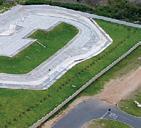


Old Mutual was an early innovator of ‘green’ investments, products and services that support the shift towards global net-zero greenhouse gas (GHG) emissions. ReSource unpacks how this financial group has played a major role in investing in South Africa’s renewable energy capacity.
Old Mutual remains at the forefront of the net zero and sustainability movement, by consistently backing its plans with action. Through Old Mutual Alternative Investments, the company has invested significantly in local renewable energy generation, making up a notable 31% of South Africa’s total installed renewable energy capacity.
With a firm dedication to promoting diversity and sustainability in the country’s energy mix, Old Mutual is ramping up its efforts to further accelerate these initiatives.
“With the World Economic Forum’s Global Risk Report 2022 identifying extreme weather, climate action failure and
human-led environmental damage as some of the highest-impact risks in the world today, the time for action is now. Old Mutual is therefore ensuring climate solutions are central to our sustainability efforts, while risks are carefully managed,” says Portia Bangerezako, head: Sustainability at Old Mutual.
This approach incorporates a measure of flexibility, which recognises the unique circumstances of the emerging market economies.
“But our aim throughout is to sustain, grow and protect customers’ prosperity. Our biggest contribution to addressing climate change is the way we invest the capital entrusted to us by our customers,” says Bangerezako.
As it stands, recent data out of Old Mutual’s recently published Climate and Sustainability reports show that investment properties contribute 73% of emissions, while 15% are attributable to Old Mutual’s employee-occupied properties.
Old Mutual Investment Group has also signed up to the Net Zero Asset Managers Initiative, with a commitment to the net zero goal and decarbonising proprietary investment portfolios by 2050.
“This will include investing in renewable energy and low-carbon technologies, and driving actions towards responsible decarbonisation through collaboration and advocacy,” says Bangerezako.
In 2022, Old Mutual joined the UN-convened Net Zero Asset Owner Alliance – a member-led initiative of institutional investors committed to transitioning their investment portfolios to net-zero greenhouse gas emissions by 2050.
The key objectives are to gain insights and knowledge, liaise with global peers, and contribute to and influence the broader African and emerging market decarbonisation pathway. Old Mutual is committed to transitioning its investment portfolios towards companies that are low emitters of greenhouse gas emissions and to those that are taking active steps to reducing their carbon emissions.


Old Mutual’s ESG investment solutions include a climate-focused, low-carbon investment product suite that is 40% less carbon-intensive than the Capped SWIX index of top 40 investable companies.
Meanwhile, Old Mutual Alternative Investments’ strategy to drive the energy transition to a cleaner energy mix will see more carbon-intense assets being exited over
the next few years. During 2022, Old Mutual Investment Group conducted climate-related engagements with 53 investee companies with a total of 76 engagements.
“We will also be championing the development and issuance of green bonds and the establishment of low-carbon investment benchmarks.”
While Africa has only contributed a small 3.8% to global emissions, the reality is that it stands out disproportionately as the most vulnerable region in the world to the

“This is why planning early and basing decisions on trusted data and real economic needs are so important,” says Bangerezako. While a common argument against the rapid transition to an alternative energy mix is the purported impact on lives and livelihoods, Old Mutual sees building sustainable local communities and businesses as integral to ultimate success – and central to its planning activities in all respects.
“Our key community focus areas address the prevailing socioeconomic challenges within the communities we operate in,” explains Bangerezako.
In this regard, Old Mutual has carried out a comprehensive identification process and is actively monitoring both its internal operations
and the external environment to gain a well-informed understanding of how it may affect customers and communities, to take necessary and appropriate measures to address any potential impacts.
“Notably, Old Mutual recognises that SMMEs are the backbone of the African economy yet they face pertinent challenges such as limited access to funding, infrastructural challenges, pandemic recovery and more. Old Mutual is uniquely positioned to provide an integrated commercial service offering while delivering impactful solutions,” says Bangerezako.
In this regard, SMME support to the tune of over half a billion rand is also being rolled out for transformation, innovation, empowerment, impact and green economy investing.
Recent initiatives have seen 5 270 SMMEs (2021: 4 600) reached by Old Mutual, with R289 million committed to SMMEs (2021: R260 million) in South Africa and 584 jobs created by the Masisizane Fund. Since 2019, the Old Mutual ESD fund has approved R332 million in debt and equity funding.
“We are committed to taking meaningful action to address the effects of climate change while delivering sustainable, positive investment and other financial outcomes for our customers, including much-needed financial education to navigate their financial futures. In building the most valuable business in our industry, we will continue to create a positive and sustainable impact across our communities, the environment and broader society,” concludes Bangerezako.





Separating waste for recycling is one of the easiest ways that citizens can ‘Invest in our Planet’ – the theme for this year’s Earth Day, which took place on 22 April. Unfortunately, according to the CSIR, only around 10% of urban South African households recycle.


Finding a reason to separate waste for recycling is perhaps the first step in changing one’s attitude and behaviour, says Edith Leeuta, CEO of Fibre Circle, the producer responsibility organisation for the South African paper and paper packaging sector.
1
Today’s grocery delivery, tomorrow’s cardboard box
Paper is a raw material and used to make new products such as cardboard boxes, paper bags, toilet paper and facial tissue. By keeping used paper and paper packaging clean and dry, and away from wet waste, you help to keep it in good condition for its next life.
A recent study found that the paper fibres in cardboard boxes could be recycled up to 25 times before the fibres become unusable.
2 Landfills are taking strain
Recycling reduces the amount of waste going to landfills, which are already stressed. For every tonne of paper that is collected, three cubic metres of landfill space are saved. South Africa’s well-established paper recycling
industry ensures that more than one million tonnes are kept out of landfills every year and recycled into new products, but there is certainly room for improvement.
3
Your ‘trash’ is someone’s treasure
Recycling is a source of income for an estimated 60 000 to 90 000 men and women countrywide, and some recyclables are like gold for waste collectors.
You can make a collector’s work cleaner, quicker and easier by keeping certain recyclables out of your bin and in a separate bag or box.
Recyclable paper items include used office paper, brown cardboard boxes, clean packaging such as cereal, toothpaste, pizza and takeaway boxes, grocery delivery bags and takeaway bags, paper cups, and milk and juice cartons.
You can also put aside plastic milk bottles, PET soft drink bottles, fabric softener bottles, aluminium soft drink cans and tin cans.
It is, however, a good idea to find out what your neighbourhood collectors take. (They may only take certain items and this may differ from area to area.)
4
And it’s not about saving trees! Leeuta cautions, “We need to bust the myth that recycling paper saves trees because, in South Africa, paper is produced from sustainably managed forests, which are farmed for the purpose of making wood and paper products.”

This ‘farming’ entails planting, growing, harvesting and, importantly, replanting with a lot of science and environmental management in between. According to the Paper Manufacturers Association of South Africa, less than 10% of the total plantation area (676 000 hectares) is harvested annually, and is replanted in the same year.
Also, while these trees are growing, they take up carbon dioxide, make carbohydrates using energy from the sun and release oxygen.
Trees store carbon in their wood. Even when wood is chipped, pulped and made into paper, the carbon stays locked up.
By recycling our paper, we ensure that this carbon remains locked up for longer. So, there’s your fourth and best reason –recycle to invest in your planet and mitigate climate change.



Tyres are among the largest and most problematic sources of waste – not only in South Africa but globally. It is estimated that there are millions of waste tyres lying in dumps and stockpiles or scattered across the country in residential, industrial and rural areas.
Worldwide, the amount of used polymer products is increasing by the year: most of this is used automobile tyres. Various studies like JATMA (Japan Automobile Tyre Manufacturers Association) quantify the global waste tyre problem at between 1 billion and 1.8 billion used tyres disposed of worldwide each year.
This represents roughly 2-3% of all waste material collected.
China, the countries of the EU, USA, Japan and India produce the largest volume of tyre waste – almost 88% of the total number of tyres around the world. According to a tyre market report by BlueWeave Consulting, the South African tyre market was worth US$2 093.2 million (R36.8 billion) in the year 2021 and is expected to reach $3 041.9 million (R56.1 billion) by 2028.
Whether dumped, burnt or landfilled, every tyre that isn’t properly recycled leaches toxic and hazardous compounds into the environment. These toxic chemicals consist of lead, cadmium, dioxins, furans, hydrogen chloride, benzene, polychlorinated biphenyls, arsenic, mercury, chromium, and vanadium –substances that are detrimental to the health of communities and environment.
The different chemical compositions and the cross-linked structures of rubber in tyres is the main reason why they are highly resistant to
biodegradation, photochemical decomposition, chemical reagents and high temperatures.
This increasing numbers of used tyres has therefore caused a serious threat to the environment; however, there has been significant progress made in recent years in the management of polymer waste, which has meant that used tyres are starting to be perceived as a valuable raw material.
The launch of the Tyre Recycling Industry Association of South Africa (TRIASA), the country’s first independent industry body, comes at a critical time for the local economy and the environment. This is according to Dr Mehran Zarrebini, one of the body’s founding members and CEO of a Hammarsdale-based truck tyre recycling operation, Mathe Group.
Zarrebini, who steered Mathe Group from a start-up in 2012 to one of the industry’s major success stories today, advocates for tyre recycling at forums across the world.
The road towards efficiently repurposing used tyres has been a rocky one for South Africa. The Recycling and Economic Development Initiative of South Africa (REDISA) was established in 2013 with the primary goal of creating an environmentally friendly waste tyre management solution. Unfortunately, it was suspended in 2017 following allegations of mismanagement, corruption and financial irregularities. Minimal recycling has continued since then.
However, Zarrebini is confident that, as a registered stakeholder in the lead-up to the imminent finalisation of the Section 29 Integrated Waste Tyre Plan, TRIASA can make an important contribution to this new strategy, not only helping to whittle away the evergrowing stockpile of waste tyres, but also to create entrepreneurial and manufacturing opportunities, as well as employment.
“Our aim is to unite the different elements of tyre recycling in South Africa and to provide a forum for discussion, knowledge exchange and collaboration on pressing issues within the industry. Our priority, as TRIASA, is to foster the growth of the tyre recycling industry, promoting a circular economy and reducing South Africa’s dependency on imported rubber,” he says.
TRIASA’s primary objectives are threefold:
1 Encouraging green public procurement (GPP) and supporting the circular economy by promoting the use of recycled tyre material (RTM) in applications such as road resurfacing, construction and infrastructure projects.
2 Stimulating the use of recycled content in new products, so as to replace imported rubber.
3
Supporting research in tyre recycling. This would foster innovation in endmarket applications for RTMs to expand their potential use and create new opportunities within the industry.
TRIASA members are companies/entities who are involved in the processing of waste tyres and employ either of the primary recycling technologies currently in use – mechanical or ambient grinding of tyres and pyrolysis (decomposition at high temperatures) of tyres, as well as preprocessing, shredding and baling.
All members of TRIASA must prove that they are processing waste tyre material, be registered with the Waste Bureau, and have supply agreements in place.
“I believe very strongly that industry should foster and nurture a strong relationship with government with respect to the implementation and management of the tyre waste management plan of South Africa. We believe that the Department of Forestry, Fisheries and the Environment as well as TRIASA share common goals in safeguarding our environment and ensuring compliance of the waste tyre industry in South Africa,” notes Zarrebini.
A global problem
He emphasises that the disposal of waste tyres is an international challenge. In 2021, global tyre production was estimated to be


1 900 000 000 units. This included tyres for on- and off-road vehicles and equipment.
“The rule of thumb to estimate potential tyre arisings is one for one. For each tyre placed on the market – as original or replacement equipment – one tyre will reach the end of its road life. From then, they will be defined as waste,” he explains.
The global tyre waste pile also includes rejects.
The South African perspective
Waste tyre statistics in South Africa are difficult to come by, posing a challenge for those devising a waste tyre plan. Although some role players provide accurate data, others have almost no record keeping systems.
Zarrebini points out that this emphasises the need for a national audit on waste tyres in South Africa.
An estimate, based on confirmed data by the Waste Bureau, suggests that an average of 13 million tyres weighing 300 000 t are sold in South Africa each year through a network of between 1 400 to 2 000 dealerships.
the total. Applying an 18-20% reduction in weight between new and waste tyres results in an estimated 240 000 t to 250 000 t of end-of-life tyres per year in South Africa. The majority are returned to dealerships and fitment centres when new tyres are fitted.
An estimated off-the-road waste tyre stream of 20 000 t per annum was added to derive a total estimated annual flow of waste tyres in South Africa ranging between 250 000 t and 300 000 t. Updated industry data suggest that 206 272 t of waste tyres were generated in 2021.
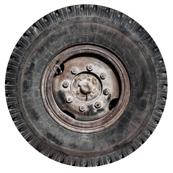
The last government statistics available indicate that, in 2018/19, just an estimated 54 460 t of waste tyres were reprocessed.
However, Zarrebini asserts that with the launch of the Waste Tyre Plan and with TRIASA’s help, South Africa can tackle its waste tyre problem effectively.
“With our innovative methods and bespoke designed machinery, we are able to recycle 99% of the component materials in all our tyres.
Passenger vehicle tyres (including SUV/4x4 and light truck radial tyres) contribute an estimated 89% and commercial vehicle (truck) tyres 11% to
“We are committed to creating a low environmental impact in our processing while ensuring that our clients are offered a high-quality, consistent product with enhanced value,” he concludes.


By processing organic waste into valuable products, such as compost and biogas, the nutrients and energy from this waste can be recovered and are not lost forever in our landfills.

When we start to look at the food and organic waste stream as a secondary resource that has economic value, we change our perception of this waste type from something burdensome that will be expensive to landfill to something that is economical.
When we start to consider that food and organic waste is actually recyclable, we can see that there is an entire economic value chain for this waste stream.
The impending organic waste landfill ban in the Western Cape in 2027 is also accelerating the development of the organic waste secondary market and, with this development, more businesses are implementing ways to extract value from their organic waste stream.
The Western Cape Government developed a bold plan to eliminate organic waste from the
province’s landfills by 2027. Starting with a 50% reduction in 2022, the plan was adopted partly in response to the ever-decreasing availability of landfill space.
Every year, roughly three million tonnes of organic waste are produced annually in the Western Cape. This inevitably ends up in the increasingly full landfills across the province. This waste then lies, slowly decomposing and producing methane – a greenhouse gas many times more potent than carbon dioxide.
Organic waste also creates leachate, a pollutant that can run off into local water sources at landfills if not managed properly.
The waste includes crop, food production, retail, hospitality and wholesale wastes. In the main, anything that is naturally biodegradable is considered organic waste.
At the forefront of the growth in the organics market are organic waste companies such as
BiobiN South Africa, which has been working with businesses of all sizes to install on-site organic waste composting units.
“It’s more than just compliance considerations; organic waste recycling and beneficiation is financially benefitting businesses more so than ever before,” says Brian Küsel, director of BiobiN South Africa.
“There is a shift towards developing largescale regional composting operations in South Africa. This is in response to very lenient composting waste regulations making it very easy to start a composting business. Over the next few years, leading up to 2027, we will be seeing more businesses composting organic waste streams, which will also support the development of the composting market.”
According to waste market research in 2022, if the Western Cape were to adopt composting as the approach to beneficiate the food and organic waste stream, the market value potential would range from R34 million to R914 million in soil amendment products.
Out of all the alternative waste treatment (AWT) technologies and processes, composting presents a very economically attractive model for diverting organic waste from landfill. Biogas treatment offers a potential market value range of R16.7 million to a highly optimistic R253.3 million in electricity or heat. Black soldier fly treatment also offers a highly lucrative potential market value range of R622.2 million to R3.1 billion in protein, oils and products relating to soil enhancement.
“To fully capture this economic opportunity, businesses that generate high volumes of food and organic waste should start looking at their waste infrastructure to streamline the

cost of transport, processing and generating the secondary product,” says Küsel.
“Designing and implementing an on-site waste processing system, which may include technology like a materials recovery facility (MRF) and on-site composting units, can reduce off-site processing costs and transport costs. It can also get your secondary resource quicker to market,” adds Küsel.
With organic waste landfill regulations becoming tighter leading up to 2027, the cost of landfilling organic waste will increase. With very lenient regulations around organic waste composting, this is becoming the most

financially feasible methods for processing food and organic waste.
Rethinking recycling
While most South Africans are very good at recycling their paper, plastics, glass and metal items, what many do not realise is that they can also recycle their organic waste.
Melanie Ludwig from the Organics Recycling Association of South Africa (ORASA) says there is a need to rethink our waste.
“In the Western Cape, more than 40% of all waste delivered to landfills is organic waste. By recycling our organic waste into


compost, we have the power to reverse climate change and replenish the health of our soils! Households can easily practise home composting to produce compost that can be used in their own gardens, while on a larger scale and to ensure sustainability, composting at community gardens can grow wholesome food for less-fortunate communities.
“We need a new approach to all waste streams in South Africa, not just organics. Source separation of waste is required to ensure that each waste stream can be effectively and efficiently recycled, composted or reused,” concludes Ludwig.


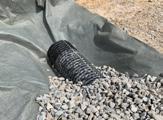
The 2 nd edition of the Coal and Energy Transition Day is taking place on Tuesday, 18 July. With the global drive towards decarbonisation and net zero emissions, discussions will focus on the just transition away from coal and the shift towards greener energy solutions. Industry leaders from government, industry, coal producers, alternative energy providers, investors, funders and independent experts will discuss key issues such as:
• What is the impact of current geo/political developments on global energy needs?
• Are we seeing an extension of the life of coal as a result?
• What will Southern Africa’s future energy mix look like?
• What actions does the industry need to take to begin the energy transition and move away from coal?
• What is the role of renewable energy in the energy transition?
• What are Eskom’s plans for meeting energy demand and its views on coal and alternative energy sources?
• What are Transnet’s plans for increasing capacity and protecting its rail infrastructure?
• And much more…


Plastics SA is a non-profit organisation that is committed to promoting the responsible use and disposal of plastics, as well as promoting the development of the industry in a sustainable manner.
Plastics SA, the umbrella body representing the South African plastics industry, is proud to announce its commitment to combatting plastic pollution on World Environment Day on 5 June and World Oceans Day on 8 June 2023.
“This year’s theme – ‘Solutions to Plastic Pollution’ – highlights the urgent need to address the plastic waste crisis that is damaging our environment and harming our marine life.
As a responsible industry, Plastics SA is taking the lead in developing and supporting various initiatives to reduce the amount of plastic that ends up in the environment and our oceans,” says Douw Steyn, sustainability director at Plastics SA.
To mark World Environment Day and World Oceans Day, Plastics SA will once again be actively participating in and supporting
numerous clean-ups at beaches, rivers and waterways across the country. These clean-up events will bring together volunteers, community groups and organisations to collect plastic waste and other debris from the environment, and dispose of it safely and responsibly.
In addition to the clean-up events, Plastics SA is also committed to ongoing education and training about the dangers of marine pollution and the importance of proper waste disposal and recycling.
Taking responsibility, proactively “Plastics SA believes in taking responsibility for our waste and preventing it from ending up in nature. As one of our key areas of focus, we are proud to be working with various industry partners who are implementing projects and initiatives aimed at reducing the amount of plastic that ends up in the environment and

our oceans,” Steyn says. “We believe that, by working together, we can make a real difference and protect our environment and our oceans for future generations.
“We recognise that plastic pollution is a global issue that requires collective action from all stakeholders and, therefore, we will continue to work with government, civil society and other industries to develop sustainable solutions to plastic pollution that are also cost-efficient.
“We believe that by taking a proactive approach, we can develop innovative solutions that will help to reduce plastic waste and protect our environment. We are committed to working with our partners to find practical solutions to plastic pollution that are cost-effective, efficient and sustainable,” Steyn says.
Plastics SA is calling on all South Africans to join the fight against plastic pollution and support the initiatives on World Environment Day and World Oceans Day. By working together, we can make a real difference and protect our environment and our oceans for future generations.
For more information, visit www.plasticsinfo. co.za or email info@plasticsinfo.co.za.

Absorbent hygiene products (AHPs) such as nappies and sanitary pads have made personal hygiene convenient for millions of women, especially mothers. By Hugh Tyrrell*
Many caregivers find baby care easier and healthier with disposable nappies, particularly for mothers living in conditions without reliable water provision.
AHP waste material is not generally considered an environmental or health hazard if it is part of regular, well-managed municipal refuse collection. This is not always available in lowerincome township areas. In such instances, AHP waste can end up on street verges and informal dump sites, and is a danger to health for the community, especially children, and contributes to the problem of environmental plastic pollution. These concerns, compounded with increasingly limited landfill space, prompted the Department of Forestry, Fisheries and the Environment (DFFE) to commission a 2021 study1 on the feasibility
of diverting and repurposing AHP waste into a fuel source. One of the success criteria identified in the report was the establishment of costeffective programmes for separation at source and collection of AHP waste.
As these concerns rise in priority, various research studies have been initiated to identify solutions. Our research team conducted an initial six-month participatory research study in 2022, sponsored by Kimberly-Clark, aimed at finding an appropriate at-source collection system design to test in a pilot implementation programme in 2023.
Steven Hayes, GM: South Africa & Southern Africa, Kimberly-Clark, shared, “Kimberly-Clark is concerned about any potential impact our essential products may have on communities and the environment. Living our purpose of Better Care for a Better World, we are proud to
support the GreenEdge research team to identify consumer-relevant collection systems which can be further tested and developed in partnerships across the value chain.”
The study site selected was Samora Machel, a township near Philippi in Cape Town, with high unemployment and crime rates. Here, many families are tenants or ‘backyarders’ on a single property.
The property owner is allowed one free bin from the municipality for weekly refuse collection. This is insufficient for both the owner’s family and the backyarders. So, bins overflow, and excess rubbish, including AHP waste, is left on street corners and verges, to be cleaned up after some time by municipal contractors.
Key research questions explored in the Samora Machel study included:
• Which community engagement and behaviour change approaches would optimise participation?
• What at-source collection infrastructure and logistics would meet the needs of the community?
• How to track participation and material flow for data gathering and reporting?
• How to integrate with existing municipal collection and disposal facilities?
• How can research learnings be replicated in other contexts to promote scale?
• Can ongoing sustainability be maintained by stakeholder partnerships in government, business and industry?
A team of researchers and specialists was drawn up, working with a local non-profit organisation trusted by the community. The project was first introduced to the local councillor and community leaders. This mobilised support and opened access for researchers to the community.
Fieldwork interviews with over 400 mothers were conducted, followed by focus groups exploring attitudes and practices around diaper purchase, usage and disposal as well as municipal waste services in general.
A co-design workshop drew in the wider community including mothers to come up with ideas for a collection model. Due to concerns about safety in public spaces, most mothers said they would prefer collections from their homes. Another popular suggestion was the provision of free bins to hold used diapers in homes until collection.
The township’s Early Childhood Development (ECD) daycare centres also came forward to participate. These centres generate high volumes of diaper waste and welcomed support for responsible disposal.
With this valuable input from the community, the team developed an AHP collection model designed for the context and proposed for testing in the pilot: a local workforce will operate street carts to collect AHP waste material from households and ECD centres and take it to a centralised depot.
Here, a digital tracking platform will gather data and metrics for reporting. The AHP waste is then to be transported to the
nearest landfill for responsible disposal.
Separate collection, transport and disposal of accumulated nonhazardous AHP waste is a new direction for role players. Ongoing engagements for guidance from municipal and provincial officials are helping pave the way.
Community outreach initiatives, social media and incentives will be used to encourage mothers to register and participate in the startup phase of the pilot. Partnerships with the local health clinic and library will also provide additional support in the initial sign-up stage. The pilot program is targeted to be completed by the end of 2023.

While this pilot will collect AHPs for disposal in landfill, the longer-term objective is to divert AHP waste from landfill to more circular treatment and reprocessing
The research is being funded by the Kimberly-Clark Corporation. Professor Rinie Schenck, DSI/NRF/CSIR Chair of Waste and Society, based at the University of the Western Cape is principal researcher. Hugh Tyrrell, director of GreenEdge Communication is providing overall project management, communication and behaviour change services. Brenda Skelenge is managing community engagement and collection logistics together with community non-profit Ubuntu-Bethu. Kudoti is providing the digital platform for data tracking and reporting.

systems for downstream use. To advance the development of these technologies, which often require large volumes of waste to evaluate, research has to be focused now on efficient at-source collection systems.
This will provide estimates of regular volumes of material that could be delivered to treatment plants, on whose availability the economic feasibility depends.
The national importance of dealing with AHP waste is increasing. The DFFE has put out a tender to develop a strategy which states: ”… pilot projects should help to lay a foundation for the drafting of the strategy… to identify potential policy instruments and action plans that could help the country to address AHP waste effectively.”(2)
Industry-funded pilots such as the one at Samora Machel will be contributing to a process where all parties – government , business and civil society - collaborate in finding evidencebased end-use solutions to managing AHP waste material.
*Director of GreenEdge Communication
References:
1. “Detailed Feasibility Study and Business Case/s for the Establishment of Refuse Derived Fuel Plants to Address Absorbent Hygiene Products and other Residual Materials” - Linden Corporation, for Department of Fisheries, Forestry and Environment, 31 March 2021.
2. “Appointment of a service provider to develop a strategy relating to the design and disposal of absorbent hygienic products (AHP) waste, such as baby, adult diapers and feminine care products in South Africa, for a twelve (12) month period” – Tender document, Department of Fisheries, Forestry and Environment, September 2022.


Municipalities are under increasing pressure to ensure the distribution of basic resources that citizens depend on like water, electricity and refuse removal.


One of the major challenges facing municipalities in South Africa is ensuring that all households within their areas of jurisdiction are provided with a basic level of waste service. Huge waste service backlogs still exist in the country, resulting in delayed or noncollection of residential waste in the country’s major metros.
The Constitution of the Republic of South Africa under Section 24 of Chapter 2 – the Bill of Rights – stipulates that everyone has the constitutional right to have an environment that is not harmful to their health and to have the environment protected for the benefit of present and future generations through reasonable legislative and other measures that:
a) prevent pollution and ecological degradation
b) promote conservation
c) secure ecologically sustainable development and use of natural resources while promoting justifiable economic and social development. However, due to rapid urbanisation and increased population, municipalities have experienced greater challenges in ensuring that these basic needs are met. According to the latest statistics, South Africa generate roughly 122 million tonnes of waste per year. Of this waste, a maximum of only 10% is recycled or recovered for other uses, while at least 90% is still landfilled or dumped illegally.
600SA, a proud distributor of Orakci refuse compactors, asserts that one of the many factors that hinders effective municipal waste
management is the inability to effectively service and maintain existing waste collection fleets. This is due to limited spare truck availability, which makes maintenance and servicing of parts expensive.
This in turn has led to municipalities having to buy new refuse compactors; however, due to the lack of government funding, expanding a fleet also becomes a challenge. Sonia Pretorius, national sales manager at 600SA, says to ensure that municipal waste is handled and managed properly, there needs to be superior-quality waste management equipment.
“With 60 million South Africans producing on average 1 kg of waste a day, imagine if this waste is not being disposed of regularly. Our refuse compactors form part of an environmental cycle to ensure the safety of our community and the longevity of our environment.”
For more than 50 years, 600SA has been distributing premium industrial and material handling equipment for industries requiring lifting and loading, and waste equipment. It offers best-in-class equipment from prominent global manufacturers including CT Power, Orakci, UniCape and TUF Forklifts. In addition, lithium-ion battery technologies are offered through the division’s Industrial Power product range.
600SA has been in existence since 1968 and forms part of CFAO Equipment SA. It offers a complete solution for all material handling and waste management needs. Through a diverse industrial equipment product offering, 600SA offers lifetime value for its customers.
In terms of waste management, 600SA is a proud distributor of Orakci’s ORV series of refuse compactors. Orakci is a global producer of truckmounted waste collection and special service equipment products and offers the ORV series, which is ideal for clients operating and requiring type management services.
“Our ORV series of hydraulic refuse compactors is suitable for businesses looking to build or improve their waste management equipment with a truck that carries higher volumes of waste, thus reducing the number of trips to be made and thus improving productivity in other areas,” says Pretorius.
The ORV series, which works based on operating with a container or manual rear loading, can meet the needs of their customers with the rear loader refuse equipment.
In the South African climate,
With 60 million South Africans producing on average 1 kg of waste a day, imagine if this waste is not being
disposed of regularly.
Our refuse compactors form part of an environmental cycle to ensure the safety of our community and the longevity of our environment.”
waste compactor trucks require more than the amazing capacity to offer the best performance.
The ORV waste compactor truck series –which includes the ORV-419 and ORV-313 – is designed to be tough and provide safe and efficient performance.
With a corrosion-resistant steel body for reliable durability in the harshest climates, the ORV series provides easy and safe crew passage between stops and offers the best performance and safety features.
The ORV compactor series offers a total capacity ranging from 13.5 m3 to 29.5 m3, including the body size and hopper capacity. The Orakci ORV series offers the best waste management solution for your retailer and wholesaler waste disposal needs.
“Our refuse compactors are assembled locally. We are very fortunate to have highly qualified artisans, technicians and welders who are passionate about quality and their attention to detail is something that we very proud of. With over 50 years in this business, we have seen skills being transferred from generation to generation, and some of our wonderful employees has been with us for over 30 years,” boasts Pretorius.
The compactors are designed to accommodate rough terrains with minimal electrical components that can be damaged by uneven road surface and landfill sites. Due to the nature of the waste, the tailgate hopper (back end) is manufactured from Hardox 450 steel, as it is exposed to abrasion.
Refuse discharge times are between 42 and 46 seconds, which saves the operators valuable time to leave the landfill site as soon as possible.
When asked what makes the Orakci ORV series better than what is currently in the South African market, Pretorius says the company does not focus on selling products, but rather solutions.
“This has been proven by means of the simple, effective and user-friendly design of our refuse compactors. We sell solutions, not products. For example, we discuss the needs of the municipality and contractors; once we have assessed where the units will be working and the challenges they face, we customise the unit to suit the landscape, infrastructure and sites they will be working on,” says Pretorius.
A recent challenge that one client was faced with was the lack of maintenance on trees on the residential roads. When the truck is collecting domestic waste, it must pass underneath tree branches that are hanging over the edge of the pavements. This causes the top part of the refuse compactor to get damaged, especially if there are mechanics, such as a top reeve system, on the roof of the compactor.
“We have customised our units to have protective steel cages and steel covers to avoid vitally important hydraulic hoses and electrical wires getting damaged. This might be a minor change; but if this gets damaged, then the refuse compactor will not be able to load or dispose of the waste at the landfill site.”
600SA’s refuse compactors operate in all eight metropolitan areas in South Africa, either directly through the municipality or via appointed subcontractors. Additionally, the company’s equipment also operates in over 200 local municipalities in South Africa, says Pretorius.

“They are, however, not limited by the South African borders; our refuse compactors are also being distributed into sub-Saharan Africa. Zimbabwe is one of the countries with the highest utilisation of our refuse compactors.
“We are in negotiations with various role players that will offer us the opportunity to boast seven distribution and service centres in Zimbabwe,” concludes Pretorius.

In terms of the legislation, waste from electrical and electronic equipment – widely termed e-waste – can no longer be sent to a landfill for disposal and needs to be recycled. Alastair Currie speaks to Keith Anderson, CEO of eWASA, about his body’s role as a Producer Responsibility Organisation (PRO) in managing the process, which includes interacting with municipalities.
What are some of the key developments leading up to eWASA’s registration as a PRO?
KA In March 2021, the Minister of the Department of Forestry, Fisheries, and the Environment (DFFE) gazetted the new Extended Producer Responsibility (EPR) regulations, which came into effect on 5 November 2021, with wide-sweeping implications and obligations for not just manufacturers of electrical and electronic equipment – but also distributors, retailers and wholesalers – to take back and recycle all types of end-of-life products. There was a six-month window to enable industry to make preparations.
Prior to this, a great deal of public and private stakeholder engagement had taken place over
a period of years in negotiating the finalisation of an Industry Waste Management Plan for ours and other sectors in accordance with a Section 28 Notice issued in terms of the National Environmental Management: Waste Act, 2008 (No. 59 of 2008).
Then, in 2020, the Minister announced the withdrawal of Section 28 and replaced it with the Section 18 EPR regulations. This went out for public comment, which led to the establishment of a Ministerial Task Team to iron out issues raised, on which I served as one of the advisory members as an e-waste industry representative.
eWASA was subsequently appointed as a PRO to manage EPR responsibilities in our sector, which in our case encompasses electrical and electronic equipment, lighting, paper and packaging. Just to clarify, there are other PROs in these fields, each with their own action plan.

Our overall mandate as eWASA is to ensure that e-waste, which falls into the hazardous waste category, does not pose a risk to the environment. Plus, there are major commercial opportunities, and we support government’s objectives to create employment and grow SMMEs in the recycling sector.
From a PRO perspective, we’ve scaled up our capacity to manage the process. This includes advising our members on the steps required across the full value chain, from producers to dismantlers, refurbishers and waste pickers.
A key portion of the latter focus is on the packaging sector, collecting plastics, but there are a smaller number also collecting e-waste. In terms of the regulations, the PRO and producers are required to negotiate with the waste pickers and establish a collection payment scale. We have engaged with the South African Waste Pickers Association and the Association of Recyclers, as the two main representative bodies in the country, and are close to finalising an agreement. Part of the requirement is that all waste pickers will need to be registered. That’s beneficial in terms of knowing the numbers, plus it’s part of formalising the sector.
Another positive development is that every registered recycler will be able to claim back from the PRO for products recycled. An example could be a recycled product originally produced by a leading electronics manufacturer registered with eWASA. The recycler will be required to submit a materials recovery sheet to claim a refund.
Yes and no. We have some exceptional examples of good corporate citizenship, where producers manufacture their products with lifecycle reutilisation as the starting point, and with passionate support for the EPR mandate. Generally, though, the response from producers has been mixed.
For producers, there are added cost implications since they now need to register with eWASA, or another sector PRO, and pay EPR fees to have their end-of-life products collected and disposed of in an environmentally
sound manner. However, we still have a situation where a high percentage of producers are not on board in terms of the regulations. This ‘free rider’ situation is unacceptable, as it unfairly prejudices paying members, many of whom are global manufacturers that currently pay millions in EPR fees.
The world’s best legislation is meaningless if it’s not enforced. So, from eWASA’s perspective – as a pioneer in promoting e-waste – we believe there needs to be more proactive enforcement by the DFFF. From our discussions, the department has indicated that it is scaling up its compliance division, but to date – to the best of our knowledge – no one has been prosecuted for non-compliance.

municipal landfills complying?
Before I answer that, let’s ask the question: “Are domestic households currently separating their hazardous waste at source?”
The answer in many cases is no. And even where responsible citizens do separate at source, how many municipalities are equipped to collect and treat hazardous waste in terms of engineered disposal sites?
Against this background, the DFFE’s recent release of the draft Household Hazardous Waste Management Strategy for public comment prepares the groundwork. It will also clarify the gaps between EPR obligations and municipal landfill responsibilities.
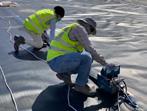


The regulations make it clear. Fines can go up to R5 million and/or a 15-year prison sentence.
By September 2021, all PROs had to submit their EPR fee methodology for review by the Minister of the DFFE, followed by a final vetting process by the Minister of Finance and the issuing of a concurrence letter. We received our letter in July 2022. That put us a bit on the backfoot, but we are now moving forward with good traction.
Our current PRO plan approved by the DFFE runs for five years. In terms of the agreement, a portion of the EPR fees can be used to sustain the PRO on a progressively declining scale. In year one, which was 2022, it was a maximum of 20%. This year, it’s 15%, and from year three onwards 12%. The upside is that this encourages prudent expenditure. The downside is that for smaller PROs, it may not be financially sustainable longer term.
From eWASA’s perspective, each producer provides us with a five-year forecast and we have excellent industry support. Some 70% of the funds paid by producers are ploughed back in payment to certified recyclers who treat e-waste responsibly.
As a PRO, we are required in accordance with the regulations to form relationships with municipalities. The feedback we often receive is that they have insufficient funding, expertise and capacity, so industry must manage the problem. That’s clearly not practical. As in regions like Europe, e-waste needs an organised and systematic framework, and the central facilitator is the public sector. We need distinct colour-coded bags and collection bins for each designated waste stream.
eWASA’s response is that we can assist municipalities with technical advice on establishing disposal sites, and we can put them in touch with our certified recyclers. Plus, there’s a very willing waste picker segment that can be mobilised.
As part of the eWASA Foundation, we plan to roll out a series of online and in-person training programmes aimed at stimulating SMME development. We also plan to reach out to schools to educate children about e-waste, as well as install collection bins at these facilities. A portion of the funds from the recycled waste will be donated back to the schools.

E-waste recycling is a highly lucrative industry globally, and there are niche players in South Africa who are showing the way. Foremost though, it’s an environmental imperative and we must ensure compliance with the legislation – whether from imports or locally produced goods – and prevent e-waste going to landfill. From a PRO standpoint, our producers are committed to the process, but we need everyone on board, including the municipalities, to make it work.

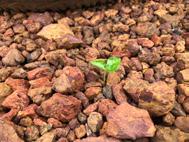
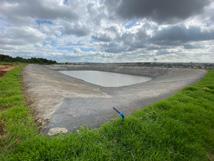




South Africa’s waste management sector has been on a wild ride of legislative changes. We’re talking about the Extended Producer Responsibility (EPR) Regulations, which have opened up a whole new world of waste management possibilities aimed at furthering a circular economy.

By Susanne Karcher*
The last few years in South Africa have been marked by a row of breakthrough legislative changes in the waste management sector.
The enforcement of Section 18 of the NEMWA (No. 59 of 1998) in November 2021 introduced Extended Producer Responsibility (EPR) Regulations to producers for a range of very different
product categories placed on the South African market.
These imported or locally produced goods and materials include paper and packaging, lighting equipment, waste electronic and electrical equipment (WEEE), and, more lately, oils, portable batteries and even pesticides. While there are seemingly few similarities between these products and materials,
they all have the potential to end up as problematic waste types at the end of their useful life, if not regulated separately so that their recovery, take-back and treatment are somewhat guaranteed.
In addition to the introduction of the EPR Regulations, WEEE, as well as lighting waste (the latter as early as 2016), was also declared as ‘undesirables’ on South African

landfills and subsequently banned for landfill disposal – a fact that is still widely unknown and/or simply disregarded given limited feasible alternatives to handle problematic fractions alternatively.
What South Africa has been lacking to date though is a ‘home’ for all WEEErelated legislation, by-law components and development strategies already in existence and going forward. And this ‘home’ is currently being established in the form of an overarching WEEE policy framework for South Africa.
The WEEE policy is due to be completed and then subsequently put out for public comment by the end of 2023. Another piece of important future WEEE management legislation is currently also being crafted in the form of minimum requirement-based norms and standards for all WEEE operators and/or their facilities in the South African WEEE management chain. This is due to be completed in early 2024.
While both the national WEEE policy and closely related norms and standards are currently still some ‘work in progress’, a baseline report, documenting the South African policy development process was
completed by the SRI team in March 2023 and subsequently published on the SRI website.
Not only does it provide deep insight into the current South African policy development process, but it is also comparing the applied methodology and envisaged outcomes to international policy development strategies.
The key motivation for compiling the baseline document has been twofold. First, to plot step by step the assumed WEEE policy development journey for South Africa within the existing socio-economic and legal landscape. This includes describing the key status quo elements listed below, which all directly inform the overall policy aim, objectives and the envisaged outcomes captured in the study:

The Sustainable Recycling Industries (SRI) Programme is a global programme that seeks to build capacity for sustainable WEEE recycling in developing nations. Phase II of the SRI programme is currently being implemented in South Africa until mid-2025. It is running in parallel in four other countries: Peru, Columbia, Egypt and Ghana.
SRI is funded by the Swiss State Secretariat of Economic Affairs (SECO). It is jointly implemented by the Swiss Federal Laboratories for Materials Science and Technology (Empa) and the World Resources Forum (WRF).
• current South Africa WEEE generation trends and management practices


• key stakeholders and their roles and responsibilities
• international and national laws applicable
• local economic growth strategies governing aspects of WEEE management.
Second, a review of international approaches to policy development and a comparative analysis of WEEE policies and strategies was done based on generic evaluation criteria. This offers a comprehensive summary of high-level recommendations and findings useful for any country, municipality or even organisation seeking to institutionalise a WEEE policy.
If you/your organisation want to be registered as an ‘Interested and Affected Party’ (I&AP) to be able to contribute to the ongoing national WEEE policy development process and/or the establishment of WEEE operator/facilitybased norms and standards for South Africa, please do not hesitate to get in touch with the Susanne Karcher, national coordinator at SRI (envirosense@xsinet.co.za).
* National project manager for SRI Phase II
The Southern African Plastic Pipe Manufacturers Association (SAPPMA) has once again highlighted the importance of maintaining high standards in the manufacturing of thermoplastic pipes.
Plastic piping is used across the complete spectrum of many industries, including mining, civil, irrigation, industrial, telecommunication and construction. Around 150 000 tonnes of pipe (PVC and HDPE) are produced annually in South Africa, representing many thousands of kilometres.
Plastic piping networks form an integral, expensive, long-term and extremely important part of the infrastructure of this country. The integrity of these networks, built up over many years, is of critical importance, serving the water supply and sewage disposal needs of many millions of people.
“This clearly highlights the need for a responsible, ethical and quality-conscious industry,” says Jan Venter, CEO of SAPPMA.
SAPPMA’s mission
The purpose and mission of SAPPMA is to create absolute customer confidence in plastic piping, thereby ensuring the long-term sustainability and dynamic growth in this allimportant industry. To this end, it is a voluntary, selfregulating, non-profit association

that represents approximately 80% of the plastic pipe manufacturers and other stakeholders in the Southern African plastic pipe industry.
Membership comprises most of the major players in Southern Africa, and the SAPPMA brand is recognised by design engineers and customers as an additional safeguard against poor-quality products.
Venter explains that SAPPMA is not in competition with any accredited certification organisation but plays a crucial coordinating role between all stakeholders in this industry. Its sole focus is on a relatively small (but crucially important) sector of industry, and it is in a unique position to detect problems much earlier than any other organisation.
In addition, SAPPMA monitors its own members in terms of product quality and full adherence to all relevant national standards. This ensures that SAPPMA members meet the association’s high standards that are based on international best practice and stipulated in its Code of Conduct.
“Plastic is clearly no longer an alternative pipe material but has grown to a dominant position in piping systems worldwide, with an estimated share of more than 50%. Independent market surveys in South Africa indicate similar dominance in sizes up to 1 000 mm diameter,” Venter explains.

“South Africa is a dry country, and water is increasingly becoming a scarce resource. With demand for clean drinking water and inconsistent rainfall, we can no longer afford the huge losses in pipelines (estimated to be of the order of 40%). The need is for piping systems that are leak-free and durable for extended lifetimes – up to 100 years. HDPE and PVC pipes answer this call with distinction. In addition, they are highly suitable for the rehabilitation of old pipelines,” Venter expounds.
SAPPMA’s approach is based on international best practice and motivated by continuous improvement. Independent and unannounced factory audits are frequently done, and samples tested to ensure that the association’s members continue to meet the high standards specified.
Venter admits that this is a rigorous process but adds that it that ensures SAPPMA members are committed to delivering the highest-quality products and services.
“The SAPPMA brand is well known and recognised by design engineers and customers as an additional safeguard against poor-quality products. This is because SAPPMA members are committed to maintaining the highest standards of quality, safety and performance.
“This commitment is reflected in the quality of the products that SAPPMA members produce, and in the services they provide to their customers. We will continue to be unwavering in our commitment to create absolute customer confidence in the plastics pipe industry, thereby ensuring long-term sustainability and dynamic growth in this allimportant industry,” adds Venter.
Anton Hanekom, executive director of Plastics SA, agrees that plastics play a major role in providing people with safe and clean drinking water. Stating that apart from being extensively used in pipelines and underground water infrastructure, plastics are also used in plumbing accessories, water storage units and even buckets or wheelbarrows used in remote areas to transport clean drinking water back to homes.
The industry is doing important work to ensure that South Africa’s water sources are clean, uncontaminated and free of litter by making concerted efforts to devise solutions that will mitigate the damage.
Polluted water is contaminated water. Research has revealed that land-based waste accounts for more than 80 % of the litter found on South African beaches, in our oceans, and in other bodies of water.
Innovative Engineering to Reduce your Carbon Footprint
Lead by a team of engineers with extensive experience, R-tek designs and manufactures stationary and mobile recycling equipment.
Custom-built equipment can also be designed and manufactured.
Plastics SA has launched and is supporting a number of projects across the country in which it works closely with local government, non-governmental organisations (NGOs), community organisations, and businesses to keep South Africa’s river catchment areas and water sources clean of visible pollutants.
These include ongoing beach and river cleanups, supporting the development of collection and sorting infrastructure assisting with Litterboom Projects, and launching numerous education and awareness campaigns for local communities across the country in order to address waste in the environment in a proactive manner.
“We are grateful for the active participation of local community groups, civil society and municipalities, as well as the support of major industry role players and the various plastic industry producer responsibility organisations (PROs) to help us achieve the amazing results addressing plastics pollution in our river catchments. Many of these industry leaders are also signatories of Operation Clean Sweep – a global voluntary commitment programme aimed at preventing the loss of plastic resin in the marine environment, such as pellets, flakes and powders. This is yet another example of the plastics industry going above and beyond to help the global fight against the world’s water crisis,” Hanekom concludes.
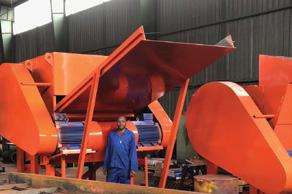
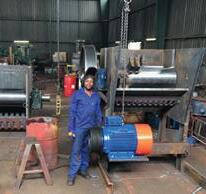


Venue: UCT Breakwater Lodge Conference Centre, Cape Town
Date: 18 to 20 October 2023
Website: www.iwmsa.co.za
LaWTIG 2023 will seek to bring the landfill and alternative waste treatment industries together to learn about the latest techniques and developments – while providing a forum for the exchange of knowledge and ideas. Although sponsorship packages are available, the LaWTIG 2023 Conference is primarily supported by an exhibition and social programme, rather than being a trade expo.
The LaWTIG 2023 Conference & Exhibition will be held at the University of Cape Town Breakwater Lodge Conference Centre on 18 and 19 October 2023. The optional technical tour will take place on 20 October 2023.
This event will, in addition, focus on the impact the countries’ current energy crisis has on landfill and alternative waste treatments while finding innovative solutions to its landfill and alternative waste treatment challenges.
What will be discussed?
• Solutions to Energy and Waste
• Successes in Landfill Operation – the how, when and why
• Opportunities in Organic Waste – where they are?
• Breakthroughs in Landfill Design – the how, when and why
• Solutions for Construction and Demolition Waste
• Landfill Equipment – Technologies and Solutions.
This conference will attract decision-makers from government and the private sector, prospective users, academics, vendors and suppliers, policymakers and representatives of various national organisations working in the arena of landfill and alternative waste treatment.
AKS Lining Systems
Blueberry Concepts/IFAT Africa 2023
CSIR
Envitech Solutions
July 5-7, 2023














Not everything in the sea is as beautiful as the creatures who live in it. Carelessly discarded plastic breaks down into small particles that look like food. When eaten, they harm sea creatures, from tiny fish to large whales.

World Oceans Day 8 June 2023 | World Environment Day 5 June 2023